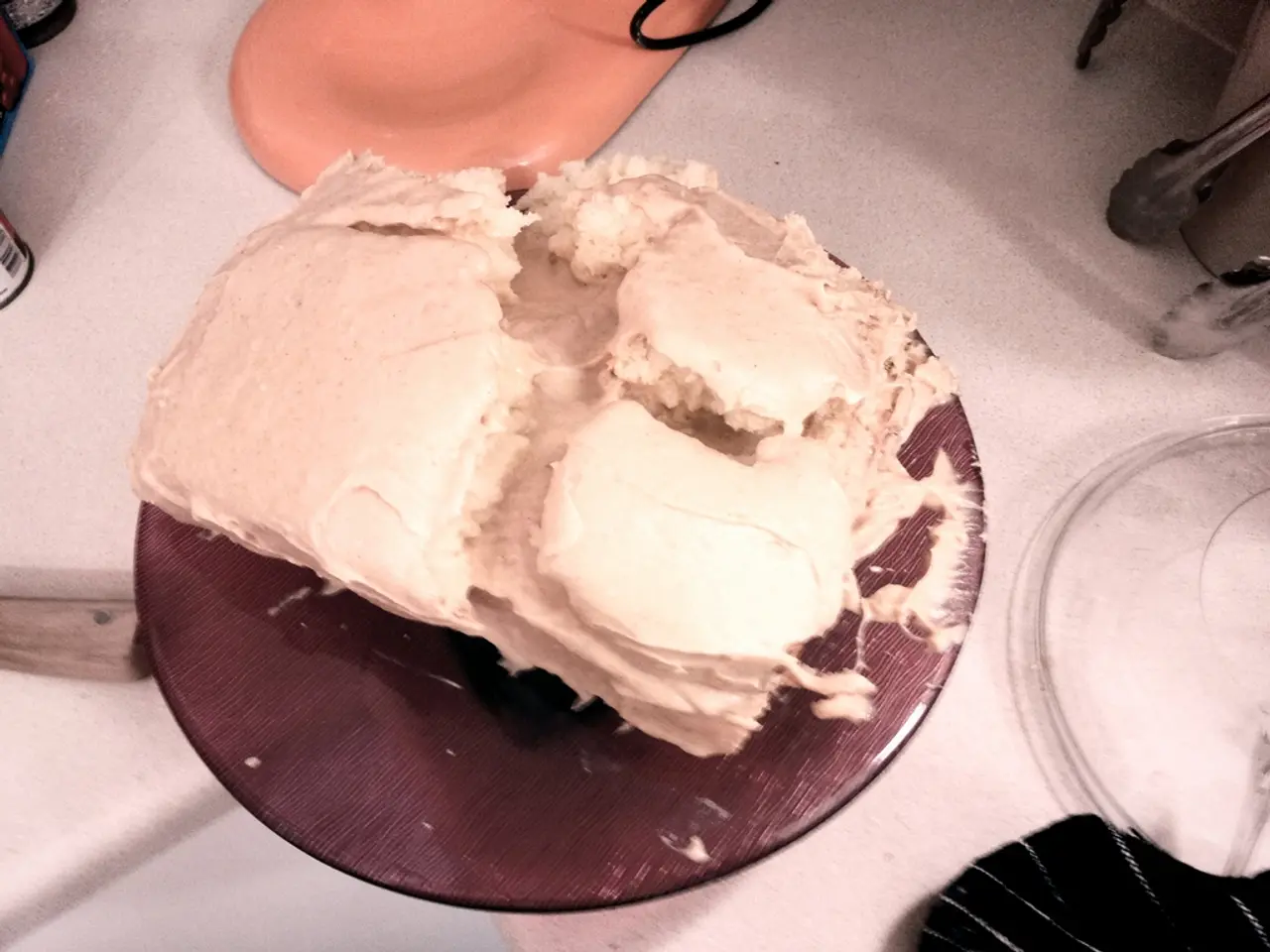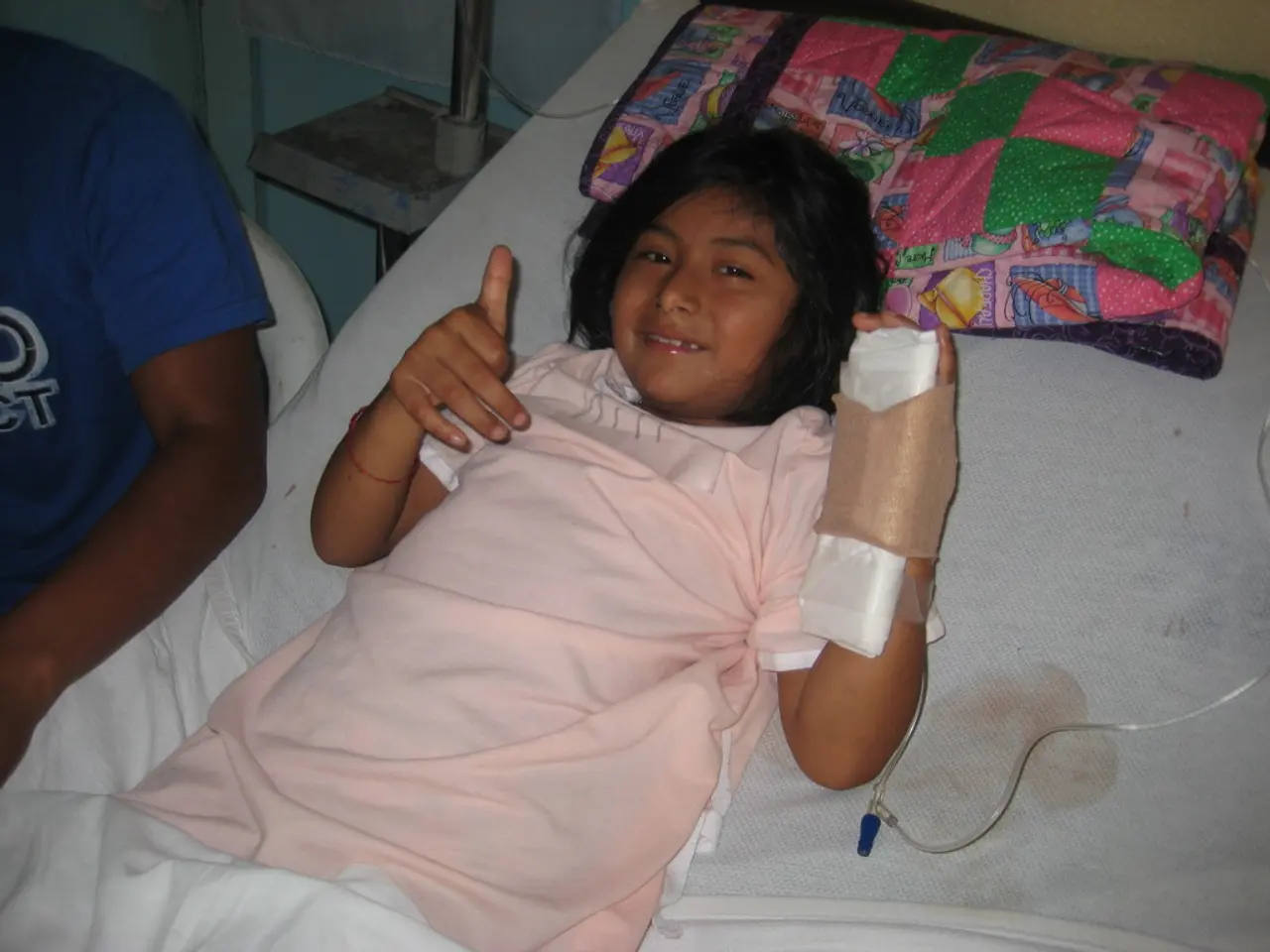Psoriasis Misidentification: What Else Might it Possibly Be?
Psoriasis, a chronic autoimmune condition, is often mistaken for other skin conditions due to its symptoms such as red, scaly patches on the skin. However, it is crucial to distinguish these conditions as their causes, clinical presentations, and treatments differ significantly.
One condition that can mimic psoriasis is eczema, particularly discoid and seborrheic eczema. While they share similarities like red, scaly patches and itching, eczema tends to have more oozing and crusting, and seborrheic dermatitis favors oily areas like the scalp and face. The underlying causes of these conditions also differ, with eczema being inflammatory, and seborrheic dermatitis being autoimmune.
Another condition that can resemble psoriasis is pityriasis rosea. It usually starts with a "herald patch" that spreads in a Christmas-tree pattern, and is often viral in origin and self-limited.
Nail fungus can also be mistaken for psoriasis due to thickened, discolored nails. However, it is caused by a fungal infection and is confirmed by fungal tests. It responds to antifungals, not immunosuppressants used for psoriasis.
Cutaneous T-cell lymphoma and mycosis fungoides are malignant conditions that can resemble chronic psoriasis. They require specialized oncologic management and a biopsy for diagnosis.
Ringworm, a fungal infection, can cause a red, scaly, sometimes ring-shaped rash. It is contagious and diagnosed by microscopy or culture. It can worsen with steroids used for psoriasis.
Secondary syphilis, with its skin rash resembling psoriasis, especially in the palms and soles, is accompanied by systemic symptoms like fever and swollen lymph nodes. It is diagnosed by blood tests for syphilis.
Inflammatory linear verrucous epidermal nevus is a genetic skin disorder presenting early in life, with linear distribution. It is not autoimmune.
Intertriginous candidiasis, caused by Candida yeast infection, can resemble inverse psoriasis. It is characterized by redness and inflammation in skin folds, often with satellite pustules.
Dermatophytosis, a fungal infection, can also resemble inverse psoriasis. It is diagnosed by microscopy or culture and treated with antifungals.
Hailey-Hailey disease, a genetic disorder with recurrent blistering, can be mistaken for inverse psoriasis. It is diagnosed clinically and genetically and treated differently than psoriasis.
Psoriasis affects over 125 million people worldwide, and it is one of the most common autoimmune diseases in the United States. It affects men and women equally and often develops before the age of 40, particularly in young adults and teenagers.
There are five main types of psoriasis: plaque, guttate, inverse, pustular, and erythrodermic. Plaque psoriasis involves thick, scaly, silvery plaques on the skin. Eczema is more likely to affect the insides of the arms and knees, while psoriasis often occurs on the outside of the elbows and knees, lower back, and scalp. Inverse psoriasis is characterized by smooth, red, shiny patches on folds of the skin, such as under the arm, in the inner thighs, or around the groin.
Providing an accurate medical history can help ensure an accurate diagnosis. It is not common for a doctor to misdiagnose skin cancer and psoriasis. However, it is essential to remember that a correct diagnosis is crucial for effective treatment.
[1] National Psoriasis Foundation. (2021). Psoriasis Overview. Retrieved from https://www.psoriasis.org/about-psoriasis/overview [2] American Academy of Dermatology. (2021). Psoriasis. Retrieved from https://www.aad.org/public/diseases/psoriasis/overview [3] Mayo Clinic. (2021). Psoriasis. Retrieved from https://www.mayoclinic.org/diseases-conditions/psoriasis/symptoms-causes/syc-20374091 [4] British Skin Foundation. (2021). Psoriasis. Retrieved from https://www.britishskinfoundation.org.uk/skin-conditions/psoriasis/ [5] National Institutes of Health. (2021). Psoriasis. Retrieved from https://www.niams.nih.gov/health-topics/psoriasis
- In dermatology, it's important to differentiate psoriasis from other skin conditions, such as eczema, pityriasis rosea, ringworm, intertriginous candidiasis, and Dermatophytosis, as their causes, clinical presentations, and treatments vary significantly.
- While eczema and psoriasis share similarities like red, scaly patches and itching, eczema tends to have more oozing and crusting, and seborrheic dermatitis favors oily areas like the scalp and face.
- Nail fungus, caused by a fungal infection and characterized by thickened, discolored nails, can be mistaken for psoriasis, but it is confirmed by fungal tests and treated with antifungals, not immunosuppressants used for psoriasis.
- Hailey-Hailey disease, a genetic disorder with recurrent blistering, can be mistaken for inverse psoriasis but is diagnosed clinically and genetically and treated differently.
- In the realm of health-and-wellness and skincare, it's crucial to understand that psoriasis, a chronic autoimmune condition affecting over 125 million people worldwide, can present in several forms, including plaque, guttate, inverse, pustular, and erythrodermic, each requiring specific treatment and correct diagnosis for effective management.




